Main organs endocrine system. Endocrine System Anatomy: Understanding the Body’s Hormone-Producing Organs
How does the endocrine system regulate bodily functions. What are the main glands and organs involved in hormone production. Which hormones play crucial roles in maintaining homeostasis. How do feedback loops control hormone release.
The Fundamentals of the Endocrine System
The endocrine system is a complex network of glands and organs that produce and secrete hormones directly into the bloodstream. These chemical messengers play a vital role in regulating various bodily functions, from growth and metabolism to reproduction and mood. Understanding the anatomy and function of the endocrine system is crucial for comprehending how our bodies maintain balance and respond to internal and external stimuli.
What is the primary function of the endocrine system?
The endocrine system’s primary function is to maintain homeostasis within the body. It achieves this by producing and releasing hormones that act as chemical messengers, traveling through the bloodstream to target specific cells or organs. These hormones help regulate various bodily processes, including:
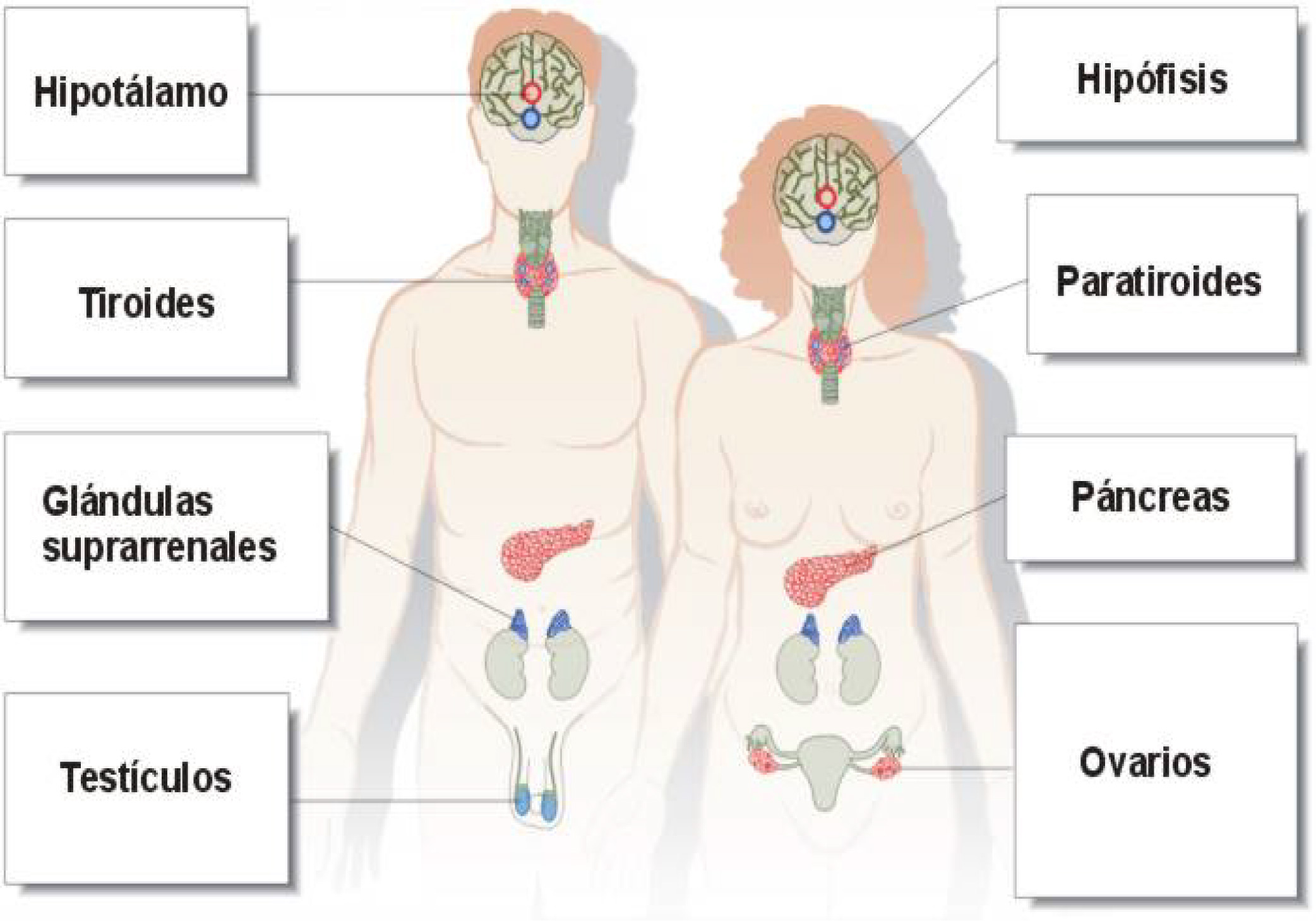
- Growth and development
- Metabolism
- Reproduction
- Stress response
- Blood sugar regulation
- Mood and behavior
- Tissue function
Major Endocrine Glands and Their Functions
The endocrine system consists of several glands and organs distributed throughout the body. Each of these structures produces specific hormones that target different cells and tissues. Let’s explore the main components of the endocrine system and their respective functions:
Pituitary Gland: The Master Regulator
Often referred to as the “master gland,” the pituitary gland is a pea-sized structure located at the base of the brain. It plays a crucial role in regulating other endocrine glands and maintaining overall hormonal balance. The pituitary gland is divided into two lobes, each producing distinct hormones:
Anterior Pituitary
- Growth hormone (GH): Stimulates growth and cell reproduction
- Adrenocorticotropic hormone (ACTH): Stimulates the adrenal glands
- Thyroid-stimulating hormone (TSH): Regulates the thyroid gland
- Follicle-stimulating hormone (FSH) and Luteinizing hormone (LH): Control reproductive functions
- Prolactin: Stimulates milk production in females
Posterior Pituitary
- Antidiuretic hormone (ADH): Regulates water balance
- Oxytocin: Involved in childbirth and lactation
Thyroid Gland: Metabolic Control Center
The thyroid gland, located in the neck, produces hormones that regulate metabolism, growth, and development. The two main thyroid hormones are:

- Thyroxine (T4)
- Triiodothyronine (T3)
These hormones influence nearly every cell in the body, controlling how quickly the body uses energy, makes proteins, and regulates sensitivity to other hormones.
Parathyroid Glands: Calcium Homeostasis
The parathyroid glands are four small glands located behind the thyroid. They produce parathyroid hormone (PTH), which regulates calcium levels in the blood and bones. PTH works in conjunction with calcitonin, a hormone produced by the thyroid gland, to maintain proper calcium balance in the body.
The Adrenal Glands: Stress Response and Electrolyte Balance
The adrenal glands, situated atop each kidney, are composed of two distinct parts: the adrenal cortex and the adrenal medulla. Each part produces different hormones with unique functions:
Adrenal Cortex
- Cortisol: Regulates metabolism and helps the body respond to stress
- Aldosterone: Controls blood pressure and electrolyte balance
- Androgens: Weak male sex hormones also produced in females
Adrenal Medulla
- Epinephrine (adrenaline): Prepares the body for “fight or flight” responses
- Norepinephrine: Works with epinephrine in stress responses
The Pancreas: Dual Function Organ
The pancreas is a unique organ that serves both endocrine and exocrine functions. As an endocrine gland, it produces several important hormones:

- Insulin: Lowers blood glucose levels
- Glucagon: Raises blood glucose levels
- Somatostatin: Regulates the release of other hormones
The exocrine function of the pancreas involves the production of digestive enzymes that are released into the small intestine.
How does the pancreas maintain blood sugar balance?
The pancreas maintains blood sugar balance through a delicate interplay between insulin and glucagon. When blood glucose levels rise, such as after a meal, the pancreas releases insulin to promote glucose uptake by cells and storage in the liver. Conversely, when blood glucose levels fall, the pancreas secretes glucagon, which stimulates the liver to release stored glucose into the bloodstream. This constant balancing act helps maintain stable blood sugar levels throughout the day.
Reproductive Glands: Orchestrators of Sexual Development and Function
The reproductive glands, also known as gonads, are responsible for producing sex hormones and gametes (reproductive cells). These glands differ between males and females:

Ovaries (Female)
The ovaries produce several hormones crucial for female reproductive function:
- Estrogen: Promotes development of female secondary sexual characteristics and regulates the menstrual cycle
- Progesterone: Prepares the uterus for pregnancy and maintains pregnancy
- Inhibin: Regulates follicle-stimulating hormone (FSH) production
Testes (Male)
The testes are responsible for producing male sex hormones and sperm:
- Testosterone: Promotes development of male secondary sexual characteristics and sperm production
- Inhibin: Regulates follicle-stimulating hormone (FSH) production
Lesser-Known Endocrine Organs and Tissues
While the major endocrine glands receive much attention, several other organs and tissues also contribute to the endocrine system:
Pineal Gland
The pineal gland, located in the brain, produces melatonin, a hormone that regulates sleep-wake cycles and circadian rhythms.
Thymus
The thymus, located in the chest, plays a crucial role in the development of the immune system. It produces thymosin, which stimulates the production and maturation of T-lymphocytes.

Adipose Tissue
Adipose tissue (fat) is now recognized as an endocrine organ, producing hormones called adipokines. These include:
- Leptin: Regulates appetite and energy expenditure
- Adiponectin: Improves insulin sensitivity
Gastrointestinal Tract
The digestive system produces various hormones that regulate appetite, digestion, and glucose metabolism. Some examples include:
- Ghrelin: Stimulates appetite
- Cholecystokinin (CCK): Suppresses appetite and stimulates digestion
- Glucagon-like peptide-1 (GLP-1): Enhances insulin secretion and suppresses appetite
Hormonal Communication and Feedback Loops
The endocrine system relies on sophisticated communication mechanisms to maintain hormonal balance and respond to the body’s needs. One of the key principles in endocrine function is the concept of feedback loops.
What are feedback loops in the endocrine system?
Feedback loops are self-regulating mechanisms that allow the body to maintain homeostasis. In the endocrine system, there are two main types of feedback loops:

- Negative feedback loops: These loops work to reduce or shut off the initial stimulus. For example, when thyroid hormone levels in the blood increase, they signal the pituitary gland to reduce TSH production, which in turn decreases thyroid hormone production.
- Positive feedback loops: These loops amplify the initial stimulus. They are less common in the endocrine system but play crucial roles in certain processes, such as childbirth, where oxytocin release stimulates uterine contractions, which in turn stimulate more oxytocin release.
How do hormones reach their target cells?
Hormones travel through the bloodstream to reach their target cells. Once they arrive, they bind to specific receptors on or within the target cells. This binding can trigger various responses, such as:
- Changes in gene expression
- Alterations in cellular metabolism
- Modifications in cell membrane permeability
- Stimulation or inhibition of enzyme activity
The specificity of hormone-receptor interactions ensures that hormones only affect their intended target cells, even though they circulate throughout the entire body.

Endocrine Disorders and Their Impact
Disruptions in the endocrine system can lead to various disorders, affecting multiple bodily functions. Some common endocrine disorders include:
Diabetes Mellitus
Diabetes is a group of metabolic disorders characterized by high blood sugar levels. The two main types are:
- Type 1 Diabetes: An autoimmune condition where the body attacks insulin-producing cells in the pancreas
- Type 2 Diabetes: A condition where the body becomes resistant to insulin or doesn’t produce enough insulin
Thyroid Disorders
Thyroid disorders can result in either overproduction (hyperthyroidism) or underproduction (hypothyroidism) of thyroid hormones. These conditions can significantly impact metabolism, energy levels, and overall health.
Growth Disorders
Abnormalities in growth hormone production can lead to conditions such as:
- Gigantism: Excessive growth during childhood
- Acromegaly: Excessive growth hormone production in adults
- Growth hormone deficiency: Insufficient growth hormone production
Adrenal Insufficiency
This condition occurs when the adrenal glands don’t produce enough cortisol or aldosterone. It can be primary (Addison’s disease) or secondary (due to pituitary dysfunction).

Advances in Endocrinology and Future Directions
The field of endocrinology is rapidly evolving, with new discoveries and treatment approaches emerging regularly. Some exciting areas of research and development include:
Personalized Medicine
Advances in genetic testing and biomarker identification are allowing for more tailored treatment approaches in endocrine disorders. This personalized medicine approach aims to optimize treatment efficacy while minimizing side effects.
Artificial Pancreas Technology
For individuals with type 1 diabetes, the development of closed-loop insulin delivery systems, or “artificial pancreas” devices, is revolutionizing diabetes management. These systems continuously monitor blood glucose levels and automatically adjust insulin delivery in real-time.
Endocrine Disruptors
Increasing research is focused on understanding the impact of environmental chemicals that can interfere with hormone function, known as endocrine disruptors. This research aims to identify potential health risks and develop strategies to mitigate their effects.

Hormone Replacement Therapies
Ongoing research is refining hormone replacement therapies for various endocrine disorders, focusing on optimizing delivery methods, dosing strategies, and long-term safety profiles.
Neuroendocrinology
The study of interactions between the nervous system and the endocrine system is unveiling new insights into how hormones influence brain function and behavior, and vice versa. This field holds promise for understanding and treating conditions such as stress disorders, depression, and neurodegenerative diseases.
As our understanding of the endocrine system continues to grow, so does our ability to diagnose, treat, and prevent endocrine disorders. The intricate interplay between hormones and their target tissues underscores the importance of maintaining a balanced and healthy endocrine system for overall well-being. By appreciating the complexity and significance of this remarkable system, we can better appreciate the marvels of human physiology and the ongoing efforts to unravel its mysteries.

Hormonal (endocrine) system – Better Health Channel
Summary
Read the full fact sheet
- Endocrine glands secrete hormones straight into the bloodstream.
- Hormones help to control many body functions, such as growth, repair and reproduction.
- The endocrine system involves many organ systems and hormones, many of which are still being investigated and understood.
Endocrine glands make chemicals called hormones and pass them straight into the bloodstream. Hormones can be thought of as chemical messages.
From the blood stream, the hormones communicate with the body by heading towards their target cell to bring about a particular change or effect to that cell. The hormone can also create changes in the cells of surrounding tissues (paracrine effect). The endocrine system works with the nervous system and the immune system to help the body cope with different events and stresses.
This branch of medicine – relating to the study of the endocrine system – is called endocrinology and is practiced by endocrinologists. The field is rapidly expanding due to understanding of the cellular pathways that hormones stimulate and the discovery of new hormones and their actions.
Exocrine glands
An exocrine gland, unlike an endocrine gland, is a gland that secretes substances (electrolytes, proteins or enzymes) straight to a target site via ducts or tube. Some examples include:
- Salivary glands
- Sweat glands
- Sebaceous glands
- The pancreas.
The pancreas is both an endocrine and exocrine organ. It releases certain enzymes to aid in digestion delivered to the gut via the pancreatic duct. The endocrine pancreas also releases hormones such as insulin and glucagon, which are hormones predominantly related to glucose metabolism, into the blood stream.
Functions of the endocrine system
Some of the roles of the endocrine system include:
- Growth
- Repair
- Sexual reproduction
- Digestion
- Homeostasis (constant internal balance).

How hormones work
A hormone will only act on a part of the body if it ‘fits’. A hormone can be thought of as a key, and its target site (such as an organ) has specially shaped locks on the cell walls. If the hormone fits the cell wall, then it will work.
The hormones can set off a cascade of other signaling pathways in the cell to cause an immediate effect (for instance, insulin signaling leads to a rapid uptake of glucose into muscle cells) or a more delayed effect (glucocorticoids bind to DNA elements in a cell to switch on the production of certain proteins, which takes a while to produce).
The endocrine system is a tightly regulated system that keeps the hormones and their effects at just the right level. One way this is achieved is through ‘feedback loops’. The release of hormones is regulated by other hormones, proteins or neuronal signals.
The released hormone then has its effect on other organs. This effect on the organ feeds back to the original signal to control any further hormone release. The pituitary gland is well known for its feedback loops.
The pituitary gland is well known for its feedback loops.
Endocrine glands and organs
The main glands and organs of the endocrine system include:
- Pituitary gland – is inside the brain. It oversees the other glands and keeps hormone levels in check. It can bring about a change in hormone production somewhere else in the system by releasing its own ‘stimulating’ hormones. The pituitary gland is also connected to the nervous system through part of the brain called the hypothalamus. The hormones released by the pituitary gland are gonadotropins (LH and FSH), growth hormone (GH), thyroid stimulating hormone (TSH), adrenocorticotropic hormone (ACTH), prolactin, antidiuretic hormone and oxytocin.
- Thyroid gland – sits in the neck at the front of the windpipe. It releases thyroid hormone (T4 and T3) which is required for metabolism and body homeostasis. It is controlled by TSH which is produced by the pituitary gland through a feed-back loop.

- Parathyroid gland – there are usually four parathyroid glands which lie alongside the thyroid gland. The parathyroid gland is involved in calcium, phosphate and vitamin D regulation.
- Adrenal glands – there are two adrenal glands which sit on top of each kidney. They make a number of different hormones. The outside part of the gland (adrenal cortex) makes cortisol, aldosterone and sex hormones. The centre of the adrenal gland (adrenal medulla) makes adrenaline. Adrenaline is an example of a hormone that is under the control of the nervous system.
- Pancreas – an organ of digestion which is inside the abdomen. It makes insulin, which controls the amount of sugar in the bloodstream. It also makes other hormones such as glucagon and somatostatin.
- Ovaries – are inside the female pelvis. They make female sex hormones like oestrogen.
- Testes – they hang in the male scrotal sack.
 They make male sex hormones like testosterone.
They make male sex hormones like testosterone.
Other lesser known endocrine organs include:
- Adipose tissue (fat tissue) – is recognised to be metabolically important. It releases hormones such as leptin, which affect appetite, and is also a site of oestrogen production. Insulin also acts on adipose tissue.
- Kidneys – produce erythropoietin (EPO) which stimulates red blood cell production, produce renin which is needed for blood pressure regulation and produce the active form of Vitamin D (1–25 dihydroxy vitamin D3)
- Gut – an increasing number of hormones in the gut are being researched and being understood to effect metabolism and appetite. Included are glucagon-like peptide 1 (GLP–1), ghrelin which stimulates appetite, and somatostatin.
Problems of the endocrine system
Numerous problems can occur in the endocrine system. These can be considered as excessive or deficient hormone production. Endocrine organs are also prone to tumours (adenomas) which can over produce hormones. Some problems of the endocrine system include:
Endocrine organs are also prone to tumours (adenomas) which can over produce hormones. Some problems of the endocrine system include:
- Diabetes – too much sugar in the blood caused by problems with insulin production. This includes type 1 diabetes (deficiency of insulin) and type 2 diabetes (initially excessive, then deficiency, of insulin).
- Menstruation abnormalities – irregular menstruation or lack of menstruation. Some causes of this include polycystic ovarian syndrome (PCOS), pituitary adenoma or primary ovarian failure (POF).
- Thyroid problems – when the gland is overactive (hyperthyroidism) or underactive (hypothyroidism). Thyroid nodules are common but thyroid cancers are rare.
- Parathyroid problems – an enlargement or one of more of the parathyroid glands can lead to high calcium levels in the blood (hypercalcemia).
- Pituitary adenomas – these are tumours of the pituitary gland that can make too much of a certain hormone or cause deficiencies of hormones.
 These tumours can be small (microadenomas) or large (macroadenomas).
These tumours can be small (microadenomas) or large (macroadenomas). - Neuro-endocrine tumours – these are rare to tumours of certain endocrine glands (usually the adrenal gland, pancreas or small bowel). These can include too much adrenaline released by the adrenal gland (pheochromocytoma), or too much hormone 5–HIAA from a carcinoid tumour which causes diarrhoea and flushing.
Where to get help
- Your GP (doctor)
- Australian Pituitary FoundationExternal Link Tel. 1300 331 807
- Australian Thyroid FoundationExternal Link
- Diabetes AustraliaExternal Link Tel. 1800 177 055
- Healthy MaleExternal Link
- Australian Menopause SocietyExternal Link Tel. (03) 5962 6241
- Jean Hailes for Women’s HealthExternal Link Tel. (03) 9562 7555
This page has been produced in consultation with and approved
by:
What Is It, Functions, Organs & Conditions
The endocrine system is a network of glands and organs located throughout the body. It’s similar to the nervous system in that it plays a vital role in controlling and regulating many of the body’s functions.
It’s similar to the nervous system in that it plays a vital role in controlling and regulating many of the body’s functions.
However, while the nervous system uses nerve impulses and neurotransmitters for communication, the endocrine system uses chemical messengers called hormones.
Keep reading to discover more about the endocrine system, what it does, and the hormones it produces.
The endocrine system is responsible for regulating a range of bodily functions through the release of hormones.
Hormones are secreted by the glands of the endocrine system, traveling through the bloodstream to various organs and tissues in the body. The hormones then tell these organs and tissues what to do or how to function.
Some examples of bodily functions that are controlled by the endocrine system include:
- metabolism
- growth and development
- sexual function and reproduction
- heart rate
- blood pressure
- appetite
- sleeping and waking cycles
- body temperature
What is a gland?
A gland is an organ that creates and releases substances that the body needs to function. There are two types of glands:
There are two types of glands:
- endocrine glands, which release hormones directly into the bloodstream
- exocrine glands, like lymph nodes and sweat glands, which are not part of the endocrine system
The glands of the endocrine system are where hormones are produced, stored, and released. Each gland produces one or more hormones, which go on to target specific organs and tissues in the body.
The glands of the endocrine system include the:
- Hypothalamus. While some people don’t consider it a gland, the hypothalamus produces multiple hormones that control the pituitary gland. It’s also involved in regulating many functions, including sleep-wake cycles, body temperature, and appetite. It can also regulate the function of other endocrine glands.
- Pituitary. The pituitary gland is located below the hypothalamus. The hormones it produces affect growth and reproduction. They can also control the function of other endocrine glands.

- Pineal. This gland is found in the middle of your brain. It’s important for your sleep-wake cycles.
- Thyroid. The thyroid gland is located in the front part of your neck. It’s very important for metabolism.
- Parathyroid. Also located in the front of your neck, the parathyroid gland is important for maintaining control of calcium levels in your bones and blood.
- Thymus. Located in the upper torso, the thymus is active until puberty and produces hormones that are important for the development of a type of white blood cell called a T cell.
- Adrenal. One adrenal gland can be found on top of each kidney. These glands produce hormones that are important for regulating functions such as blood pressure, heart rate, and stress response.
- Pancreas. The pancreas is located in your abdomen behind your stomach. Its endocrine function involves controlling blood sugar levels.

Some endocrine glands also have non-endocrine functions. For example, the ovaries and testes produce hormones, but they also have the non-endocrine function of producing eggs and sperm, respectively.
Hormones are the chemicals the endocrine system uses to send messages to organs and tissue throughout the body. Once released into the bloodstream, hormones travel to their target organ or tissue, which has receptors that recognize and react to the hormone.
Below are some examples of hormones that are produced by the endocrine system.
| Hormone | Secreting gland(s) | Function |
|---|---|---|
| adrenaline | adrenal | increases blood pressure, heart rate, and metabolism in reaction to stress |
| aldosterone | adrenal | controls the body’s salt and water balance |
| cortisol | adrenal | plays a role in stress response |
| dehydroepiandrosterone sulfate (DHEA-S) | adrenal | aids in production of body odor and growth of body hair during puberty |
| estrogen | ovary | works to regulate the menstrual cycle, maintain pregnancy, and develop female sex characteristics; aids in sperm production |
| follicle-stimulating hormone (FSH) | pituitary | controls the production of eggs and sperm |
| glucagon | pancreas | helps increase levels of blood glucose (blood sugar) |
| insulin | pancreas | helps reduce your blood glucose levels |
| luteinizing hormone (LH) | pituitary | controls estrogen and testosterone production as well as ovulation |
| melatonin | pineal | controls sleep-wake cycles |
| oxytocin | pituitary | helps with lactation, childbirth, and mother-child bonding |
| parathyroid hormone | parathyroid | controls calcium levels in bones and blood |
| progesterone | ovary | helps prepare the body for pregnancy when an egg is fertilized |
| prolactin | pituitary | promotes breast-milk production |
| testosterone | ovary, teste, adrenal | contributes to sex drive and body density in males and females as well as development of male sex characteristics |
| thyroid hormone | thyroid | helps control several body functions, including the rate of metabolism and energy levels |
Explore the interactive 3-D diagram below to learn more about the endocrine system.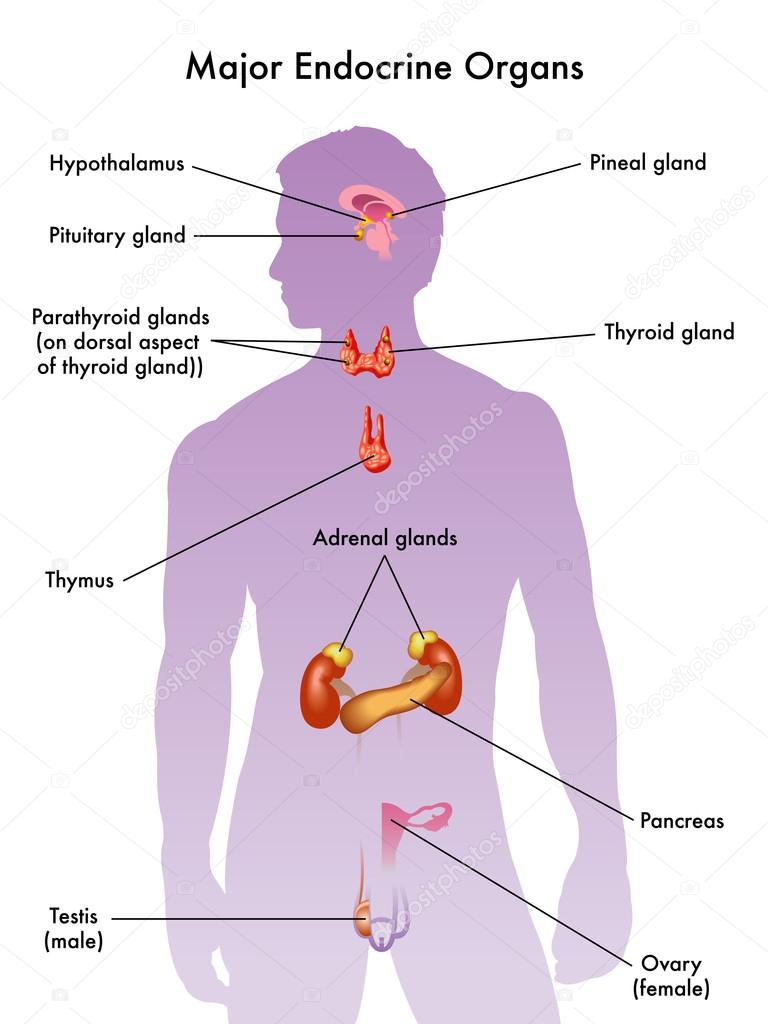
Sometimes, hormone levels can be too high or too low. When this happens, it can have a number of effects on your health. The signs and symptoms depend on the hormone that’s out of balance.
Here’s a look at some conditions that can affect the endocrine system and alter your hormone levels.
Hyperthyroidism
Hyperthyroidism happens when your thyroid gland makes more thyroid hormone than necessary. This can be caused by a range of things, including autoimmune conditions.
Some common symptoms of hyperthyroidism include:
- fatigue
- nervousness
- weight loss
- diarrhea
- issues tolerating heat
- fast heart rate
- trouble sleeping
Treatment depends on how severe the condition is, as well as its underlying cause. Options include medications, radioiodine therapy, or surgery.
Graves‘ disease is an autoimmune disorder and a common form of hyperthyroidism. In people with Graves‘ disease, the immune system attacks the thyroid, which causes it to produce more thyroid hormone than usual.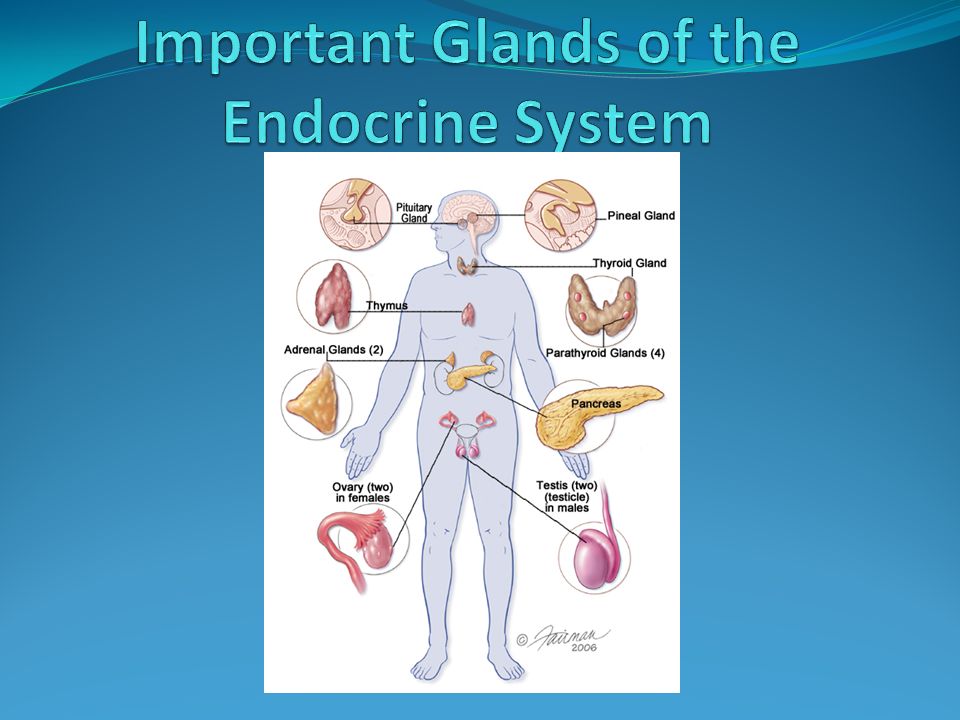
Hypothyroidism
Hypothyroidism occurs when your thyroid doesn’t produce enough thyroid hormone. Similar to hyperthyroidism, it has many potential causes.
Some common symptoms of hypothyroidism include:
- fatigue
- weight gain
- constipation
- issues tolerating the cold
- dry skin and hair
- slow heart rate
- irregular periods
- fertility issues
Treatment for hypothyroidism involves supplementing your thyroid hormone with medication.
Cushing syndrome
Cushing syndrome happens due to high levels of the hormone cortisol.
Common symptoms of Cushing syndrome include:
- weight gain
- fatty deposits in the face, midsection, or shoulders
- stretch marks, particularly on the arms, thighs, and abdomen
- slow healing of cuts, scrapes, and insect bites
- thin skin that bruises easily
- irregular periods
- decreased sex drive and fertility in males
Treatment depends on the cause of the condition and can include medications, radiation therapy, or surgery.
Addison’s disease
Addison’s disease happens when your adrenal glands don’t produce enough cortisol or aldosterone. Some symptoms of Addison’s disease include:
- fatigue
- weight loss
- abdominal pain
- low blood sugar
- nausea or vomiting
- diarrhea
- irritability
- a craving for salt or salty foods
- irregular periods
Treatment for Addison’s disease involves taking medications that help replace the hormones your body isn’t producing enough of.
Diabetes
Diabetes refers to a condition in which your blood sugar levels aren’t regulated within a certain range.
People with diabetes have too much glucose in their blood (high blood sugar). There are two types of diabetes: type 1 diabetes and type 2 diabetes.
Some common symptoms of diabetes include:
- fatigue
- increased hunger or thirst
- frequent urge to urinate
- irritability
- frequent infections
Treatment for diabetes can include blood sugar monitoring, insulin therapy, and medications. Lifestyle changes, such as getting regular exercise and eating a balanced diet, can also help.
Lifestyle changes, such as getting regular exercise and eating a balanced diet, can also help.
Polycystic ovary syndrome (PCOS)
This common condition is caused by unbalanced reproductive hormones in people with ovaries, which can create issues in the ovaries. Living with PCOS can mean that an egg may not be released every month, or may not develop as it should when it is released.
Some of the common symptoms of PCOS are:
- irregular periods
- fertility issues
- cysts that form on the ovaries
- acne
- hirsutism, which is an unusual amount of hair growth on the face or chin
- thinning hair
- weight gain
- skin tags
Treatment for PCOS focuses on easing the symptoms. Treatments include medications, like birth control and metformin, and lifestyle changes, such as focusing on nutrition and trying to reach a moderate weight if your doctor has recommended it.
Hypogonadism
A common condition, especially in older males and occasionally in females, hypogonadism is caused by a lowered production of the sex hormone testosterone. This can lead to lowered libido, as well as a variety of other symptoms, such as:
This can lead to lowered libido, as well as a variety of other symptoms, such as:
- erectile dysfunction in people with a penis
- reduced energy
- reduced muscle mass
- depressed mood
- increased irritability
Treatment for hypogonadism focuses on improved testosterone levels. Testosterone replacement therapy and lifestyle changes (such as working toward a moderate weight if your doctor has recommended it) are two popular methods.
Osteoporosis
Osteoporosis is an abnormal loss of bone mass and changes in bone tissue. It can be caused by a variety of issues, but two common causes are lowered estrogen levels in people with ovaries and lowered testosterone levels in people with testicles. These lowered hormone levels can be caused by age, as well as other diseases.
Osteoporosis doesn‘t always cause obvious symptoms. But some of the more common symptoms are bone fractures and injuries related to minor falls, lifting, and even coughing.
Treatment for osteoporosis focuses on slowing or stopping bone loss. Proper nutrition, exercise, and medications are three of the most common treatments.
Acromegaly
This rare disease is caused when the body makes too much growth hormone, which is mainly produced in the pituitary gland. Mostly diagnosed in middle-aged adults, it can cause organs, bones, cartilage, organs, and certain tissues to grow in size.
The common symptoms of acromegaly include:
- swollen nose
- swollen ears
- swollen hands and feet
- joint aches
- a deeper voice than usual
- an increase in sweating and body odor
Treatment for acromegaly includes medications, radiation therapy, and surgery.
The endocrine system is a complex collection of glands and organs that helps regulate various bodily functions. This is accomplished through the release of hormones, or chemical messengers, produced by the endocrine system.
What makes up the human body?
The article tells about what elements the human body consists of: from cells and tissues to systems and organs. Explore our unique biology and discover the importance of taking care of your health and nutrition.
Explore our unique biology and discover the importance of taking care of your health and nutrition.
The human body is one of the most complex and fantastic machines on the planet. It is made up of many organs, tissues, and systems that work together to make it function. Each organ and each system performs its own unique functions and is essential for life.
The human body is based on the skeleton, which consists of more than 200 bones of various shapes and sizes. Bones provide support for the body, protect organs, and provide movement through the synergy of various muscles and tendons.
In addition, the human body has many systems, such as cardiovascular, respiratory, musculoskeletal, digestive, nervous, urinary, endocrine, and others. Each system performs unique tasks necessary for human life.
The body also includes the skin, which is our first line of defense against the outside environment, as well as the many fluids and chemicals such as blood, lymph, and hormones that regulate many of the body’s processes.
Musculoskeletal System
Musculoskeletal System is the organ system responsible for the movement and maintenance of the human body. It consists of a skeleton and muscles. The skeleton is made up of bones, ligaments, and cartilage, while muscles are made of tissue that can contract and relax.
There are more than 200 bones in the human body, which in turn are connected by joints. The skeleton performs many functions: it protects the internal organs, provides support for the body, participates in hematopoiesis and stores minerals – calcium and phosphorus.
Muscles, in turn, provide the movement of the body. They are attached to the bones and, by contraction, compress them, which leads to movement. Muscles are divided into skeletal, smooth and cardiac. Skeletal muscles, the most studied by scientists, allow a person to move and perform various actions.
The musculoskeletal system is one of the most important systems in the human body.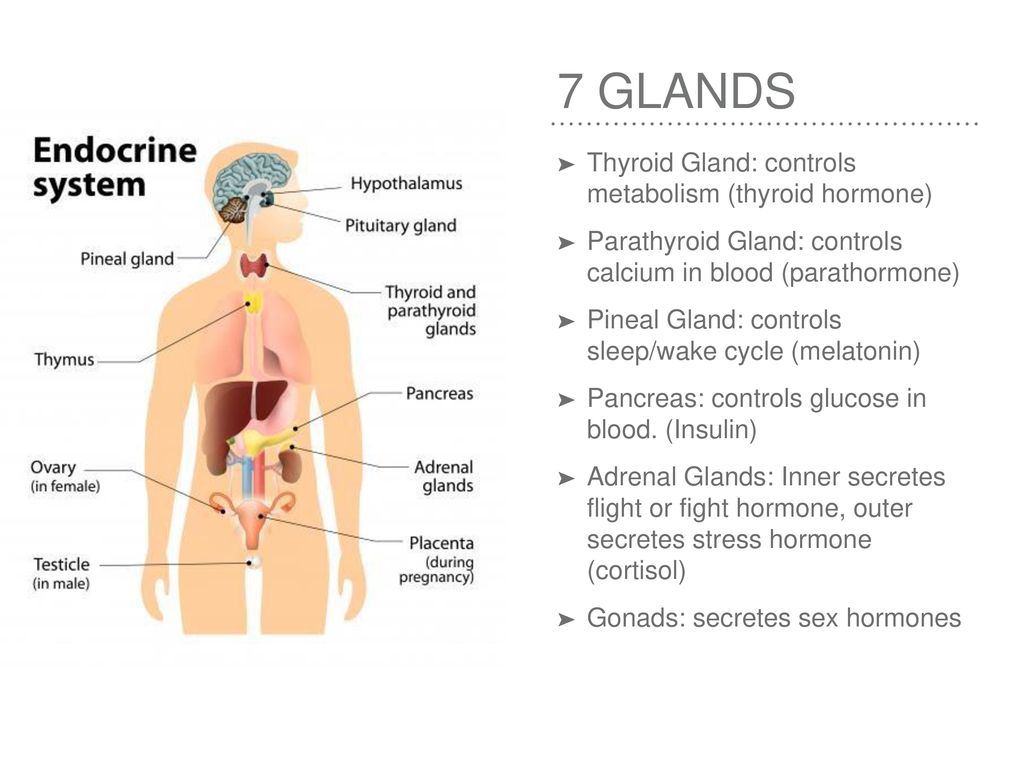 It provides its movement and maintenance, and also protects the internal organs and is involved in hematopoiesis.
It provides its movement and maintenance, and also protects the internal organs and is involved in hematopoiesis.
Circulatory system
The circulatory system is the system of organs and tissues responsible for the circulation of blood throughout the body. It consists of the heart, arteries, veins and capillaries.
The heart is the most important organ that runs the circulatory system. It is responsible for pumping blood throughout the body. The heart has four chambers: two atria and two ventricles. The atria are responsible for receiving blood from the lungs and body, while the ventricles are responsible for pumping it further into the aorta.
Arteries are large blood vessels that carry blood from the heart to organs and tissues. Each organ has its own artery. In addition, there are so-called large arteries, such as the aorta.
Veins are blood vessels that carry blood from organs and tissues back to the heart. They contain valves that prevent backflow of blood.
Capillaries are small blood vessels found in tissues and organs that connect arteries and veins. They provide the exchange of substances between blood and tissues.
All of these organs and tissues work together to ensure efficient circulation of blood throughout the body and to keep the body’s vital functions normal.
Yes, often
0%
Yes, sometimes
0%
Lymphatic system
The lymphatic system is part of the human immune system. It consists of lymphatic vessels, lymph nodes and lymphatic organs.
Lymphatic vessels carry lymph, a clear liquid that is formed when blood filters through capillary walls. Lymph nodes are some of the places where lymph is filtered from pathogens. The lymphatic organs – the spleen, thymus and lingual tonsil ring – play an important role in the body’s immune response.
The lymphatic system is involved in protecting the body from infections and other harmful factors. Lymphatic vessels and nodes are important routes for the spread of cancer. With lymphomas – malignant tumors of the lymphatic system – the outflow of lymph is difficult and immune function is impaired.
Lymphatic vessels and nodes are important routes for the spread of cancer. With lymphomas – malignant tumors of the lymphatic system – the outflow of lymph is difficult and immune function is impaired.
Therefore, taking care of the health of the lymphatic system is very important for the overall health of the body.
Nervous system
The nervous system is one of the most important systems of the human body, which controls and controls all organs and functions of the body. It is made up of millions of nerve cells called neurons and their processes. Nerve cells are connected to each other, forming complex nerve circuits and networks.
The nervous system has two main parts: central and peripheral. The central nervous system (CNS) consists of the brain and spinal cord, which are located inside the bones of the skull and spine, respectively. The peripheral nervous system (PNS) includes all nerves that exit the CNS and travel to the organs and tissues of the body, as well as all nerves that are outside the CNS.
The function of the nervous system is the transmission of information (nerve impulses) between various organs and systems of the body. It controls many processes, including movement, sensation, muscle tone, digestion, breathing, heart rate, growth and development of the body, as well as the state of emotions and consciousness.
Nervous system dysfunction can lead to various diseases such as back pain, migraine, multiple sclerosis, Parkinson’s disease, Alzheimer’s disease, epilepsy, stroke and others.
Endocrine System
The endocrine system is the organ and tissue system that produces hormones and releases them into the bloodstream to regulate bodily functions.
Hormones are substances produced by the endocrine glands that help control many processes in the body, such as growth and development, digestion, reproduction, blood glucose levels, and more.
The endocrine system includes organs such as the thyroid, pancreas, pituitary, pineal, adrenal, ovaries, and testes. Each organ produces a specific hormone that performs its functions in the body.
Each organ produces a specific hormone that performs its functions in the body.
Disorders of the endocrine system can lead to various diseases such as diabetes, hypothyroidism, hyperthyroidism, erectile dysfunction in men and many others.
Monitoring of the endocrine system is carried out by a specialist – an endocrinologist. He conducts the necessary research and prescribes treatment in case of violations in the endocrine system.
Maintaining a healthy endocrine system requires proper nutrition, regular exercise and the absence of stressful situations.
Respiratory system
The respiratory system is one of the most important systems in the human body. It consists of the respiratory organs, such as the nasal cavity, larynx, trachea, bronchi, and lungs, which together provide oxygen to the body and remove carbon dioxide from it.
The main function of the respiratory system is the exchange of gases between the environment and the body. The body receives oxygen through the lungs, which is necessary for the life of cells, and releases carbon dioxide, which is a metabolic product.
The nasal cavity plays an important role in the inhalation and exhalation of air. It is the first link in the respiratory system and serves to purify, humidify and warm the air. The tips of the cilia located on the nasal mucosa capture large particles of dust and debris, and the mucous glands secrete mucus that humidifies the air.
The larynx is an organ located between the nasal cavity and the trachea. Here are the vocal cords that allow a person to produce sounds, as well as some areas similar to wet reefs, which are important for the sensitivity and warming of the incoming air.
The trachea and bronchi are the tubes that connect the larynx and lungs. They allow air to pass freely. The lungs are the main respiratory organ, in which gases are exchanged between atmospheric air and blood, which carries oxygen throughout the body.
Gastrointestinal system
The gastrointestinal system is one of the most important systems in the human body. It is responsible for the digestion of food and obtaining the necessary nutrients from it.
The main organs of the gastrointestinal system are the stomach, small intestine, large intestine, as well as the pancreas and liver.
Stomach: The stomach is the first organ of the digestive process. It grinds food with the help of acid secreted by the mucous membrane and enzymes. Nutrients obtained from the digestion of food enter the small intestine.
Small intestine: is the longest organ of the gastrointestinal system and is responsible for the main work of digestion. Here, proteins, carbohydrates and fats are broken down into molecules, and then absorbed into the blood and lymph.
Large intestine: The large intestine is the last stage of digestion. In it, food waste processed by the stomach and small intestine becomes denser. The intestinal microflora of this department plays an important role in this process and produces substances necessary for the health of the body.
Pancreas and Liver: The pancreas secretes hormones and enzymes necessary for the digestion of food in the stomach and small intestine. The liver secretes bile, which is needed to break down fats in food and turn them into energy.
The liver secretes bile, which is needed to break down fats in food and turn them into energy.
The entire gastrointestinal system works together to provide our bodies with the nutrients we need and remove waste we no longer need.
Genitourinary system
The urogenital system is the organ system responsible for removing urea, creatinine, acids and other harmful substances from the body. This system consists of the kidneys, ureters, bladder and urethra.
The kidneys are paired organs located in the lumbar region, approximately between the 12th thoracic and 3rd lumbar vertebrae. They are the main filters of the body, releasing waste and excess fluid from the blood. The kidney filter consists of millions of small tubules where the blood is cleansed of toxins and excess fluid.
The filtered fluid enters the ureters, the tubes that connect the kidneys to the bladder, which opens at the bottom of its wall with the urethra, the tube that carries urine out of the bladder.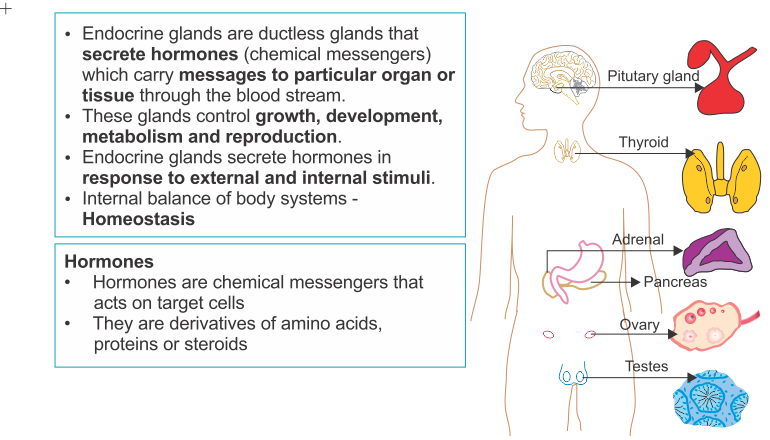 In women, the urethra is shorter than in men. In men, the urethra becomes common with the urogenital gland and opens into the root of the penis.
In women, the urethra is shorter than in men. In men, the urethra becomes common with the urogenital gland and opens into the root of the penis.
The genitourinary system plays an important role in human life, so its health must be protected.
Immune system
The immune system is a complex system of protecting the body from external and internal aggressors. It consists of cells and molecules capable of detecting and destroying all possible threats.
The main cells of the immune system are lymphocytes. They are found in the blood and lymph, where they perform their functions. The most important types of lymphocytes are T-lymphocytes, which distinguish between infected or altered cells, and B-lymphocytes, which produce antibodies.
In addition to cells, the immune system has special proteins – cytokines. They regulate the work of immune system cells, are involved in a quick response to a certain threat, and also provide communication between various cells.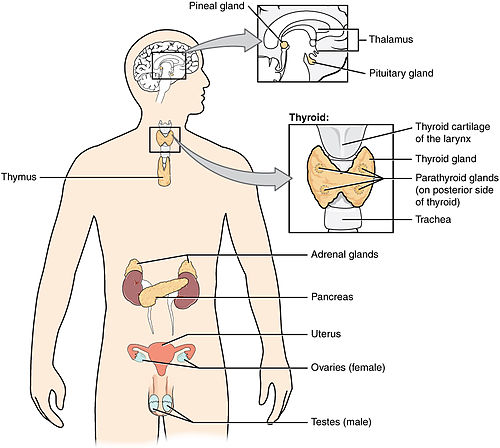
There are two types of immunity: adaptive and innate. Adaptive immunity develops throughout life and is a flexible system that adapts to new threats. Innate immunity, in contrast, is innate and is not tuned to a specific threat. It is a primary barrier and is aimed at fighting bacteria, fungi and viruses.
When the immune system works in a timely and correct manner, it prevents and cures many diseases. However, some diseases can be caused not only by impaired functioning of the immune system, but also by its hyperactivity.
Skin
Skin is the outer protective layer of our body. It consists of three layers: epidermis, dermis and subcutaneous adipose tissue.
The epidermis is the top layer of the skin, which consists of several sublayers of cells. It is the layer that protects our body from external influences such as UV rays, infections and injury.
The dermis is the middle layer of the skin, which contains blood and lymph vessels, nerve endings and hair follicles.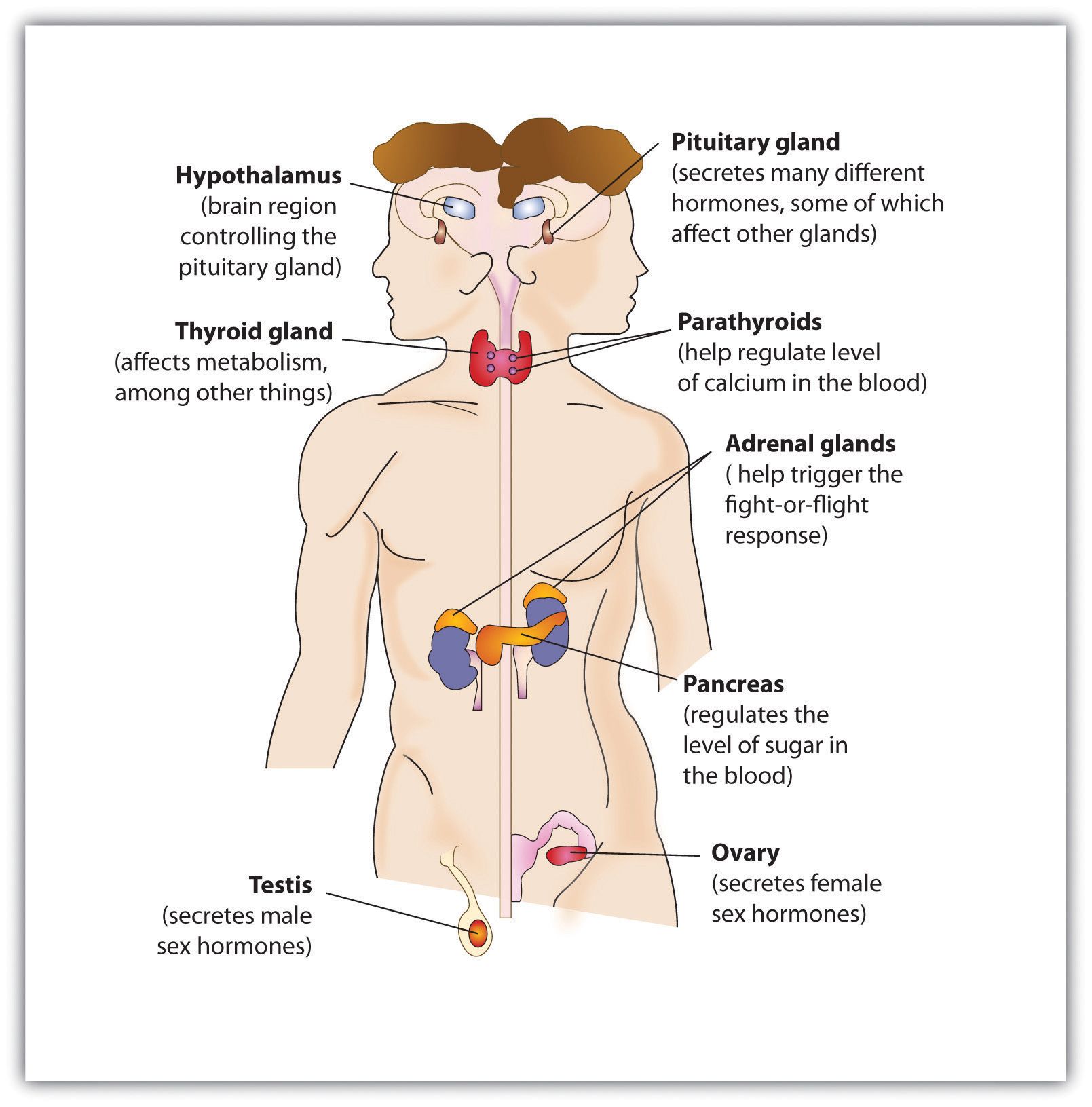 It also contains collagen and elastin, which give the skin firmness and elasticity.
It also contains collagen and elastin, which give the skin firmness and elasticity.
Subcutaneous adipose tissue – located under the dermis and consists of fat cells. It plays an important role in regulating body temperature and protecting us from shock and injury.
The skin performs many functions in our body, including protecting us from external influences, participating in the regulation of body temperature, creating sensations, interacting with the environment, and much more.
Eyes
Eyes are organs of vision that allow you to perceive light and convert it into nerve impulses that are transmitted to the brain.
The human eye consists of a number of parts, each of which plays a different role in the process of vision. In addition, the eye has a unique structure that allows it to adapt to different lighting conditions and distances to objects.
The main parts of the eye include:
- Cornea, the transparent membrane in front of the eye that protects it from injury;
- Pupil – an opening in the center of the iris that controls the amount of light entering the eye;
- The lens is a lens that focuses light on the retina at the back of the eye;
- Retina is the layer of tissue onto which an image is projected;
- The optic nerve is the nerve that carries information from the eye to the brain for interpretation.

Eyes play an important role in human communication with the outside world. They allow us to see and recognize objects, distinguish colors and shapes, and sense the depth and distance of objects.
Taking care of eye health is an important part of overall health care. Regular check-ups with an ophthalmologist, proper nutrition and the use of protective glasses in the sun will help maintain vision throughout life.
Ears
Ears are one of the main hearing organs of the human body. They are also important for maintaining balance and coordination of movements.
The ears have a unique anatomical structure that allows them to detect sound waves and convert them into nerve impulses that are then transmitted to the brain. Hearing begins in the auricle, where the external auditory meatus is located.
The sound waves then enter the pinna and enter the ear tube, which connects the ears to the throat. This allows you to balance the pressure in the auricle and provide stability when atmospheric pressure changes.
Inside the ear is the auditory ossicle, which transmits vibrations from the eardrum to the inner ear, where the auditory nerve is located. The inner ear is also responsible for our balance and orientation in space.
Ears need care and protection. Exposure to noise, pollution and injury can lead to hearing loss and other health problems. Therefore, strong sounds should be avoided and ear protection should be used when necessary.
Teeth
Teeth are rigid structures found in the human mouth and serve various tasks in the process of digestion and speech.
An adult usually has 32 teeth, evenly distributed between the upper and lower jaws. Teeth are divided into several types depending on their shape and function:
- Incisors – sharp teeth designed to cut food
- Canines – sharp and long teeth used to tear and hold prey (in animals)
- Premolars – truncated teeth designed for cutting food
- Molars – wide and flat teeth used for chewing and grinding food
Teeth consist of a crown and root, which are connected by a knot. Inside the tooth is a cavity filled with soft tissue – the pulp, which contains blood and nerve vessels.
Inside the tooth is a cavity filled with soft tissue – the pulp, which contains blood and nerve vessels.
To keep your teeth healthy, it is important to take good care of them, brush them regularly, eat a healthy diet and visit the dentist regularly.
Hair
Hair is a component of various parts of the human body, such as the head, arms, legs, eyebrows or eyelashes. Hair has a root part on the skin, which is nourished by capillaries and is responsible for growth.
The main functions of hair are thermal insulation and protection of the skin from solar radiation, as well as an aesthetic role. They can have a different color, texture, shape and length.
Hair on the head has an additional function – they are involved in the regulation of body temperature, working as a heat exchange mechanism. In addition, the hair of the head plays an important role in creating an individual look and expressing personality.
Hair needs to be taken care of to keep it healthy and beautiful. Regular shampooing, care products and the use of natural oils will help keep your hair in good condition.
Regular shampooing, care products and the use of natural oils will help keep your hair in good condition.
Nails
Nails are hard plates that are found on the top of the human limbs. Each person has 20 nails, 5 on each hand and foot.
Nails protect fingertips from injury and damage. They are made up of keratin, which is a protein material. Keratin gives them hardness and elasticity and protects against external damage.
Nails grow about 0.1 mm per day and are completely renewed after 6-12 months, depending on the age and health of the body.
Nail color can vary from light pink to dark brown, depending on the apparent circulation and health.
Nails require care and maintenance, including proper edging, use of strong and quality scissors, use of hand and nail cream, and regular visits to a manicurist.
Interesting fact: The growth zone of the nail is called the matrix. It is located near the base of the nail and contains cells that give signals for the growth and development of the nail.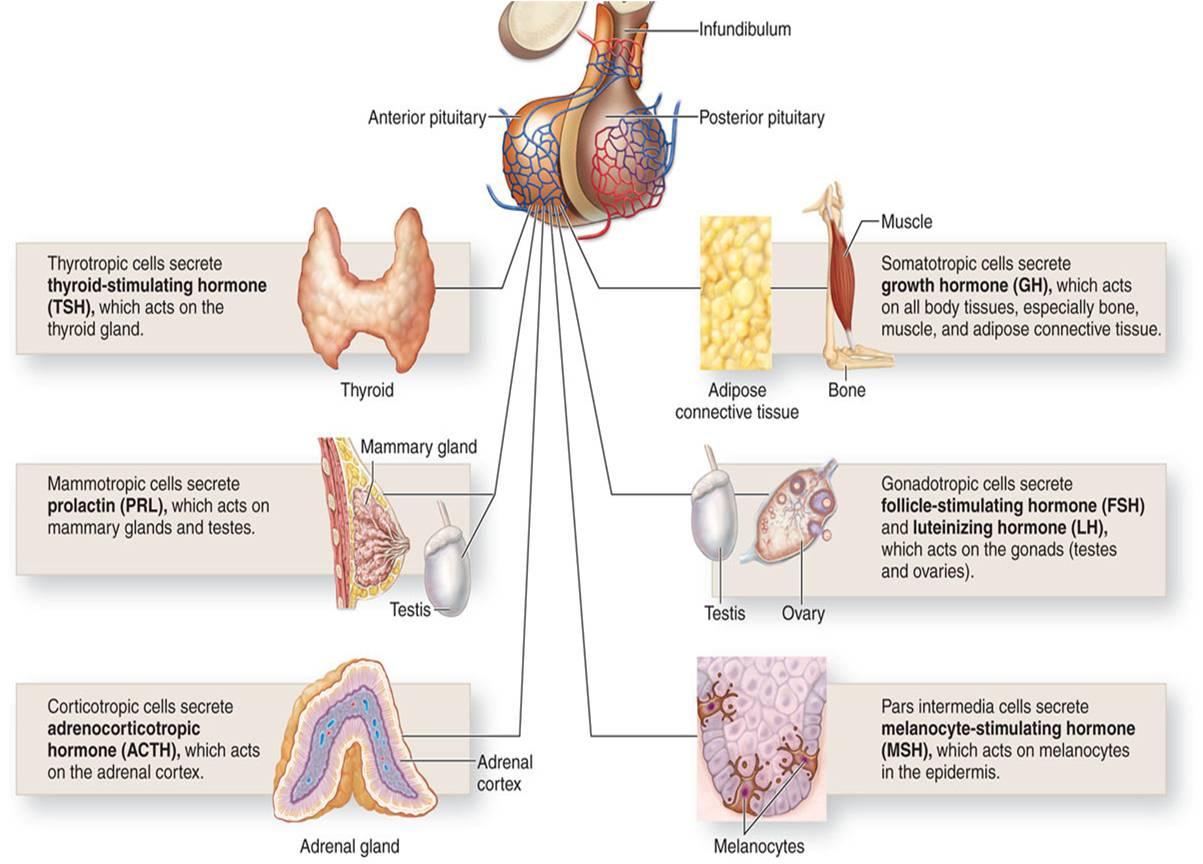
Related videos:
Q&A:
What parts of the body belong to the human skeletal system?
The skeletal system includes all the bones of the body, including the skull, spine, ribs, and limbs. In addition, the skeletal system includes joints, ligaments, and muscles that connect bones and provide movement for the body.
What is the International System of Mass Units?
The International System of Mass Units (SI) uses the kilogram (kg) as the basic unit of mass. She defines the kilogram as the mass of the standard international kilogram held at the Bureau of International Weights and Measures in Sevres, France.
How long does it take for food to pass through the gastrointestinal tract?
The transit time of food through the gastrointestinal tract depends on the type of food and individual characteristics of the person. Usually, food passes through the stomach 2-4 hours after eating. It then passes into the small intestine, where most of the absorption of nutrients occurs within 3-5 hours. The remaining food moves to the large intestine, where it reaches its final form, and then leaves the body in the form of feces through the rectum and anus.
Usually, food passes through the stomach 2-4 hours after eating. It then passes into the small intestine, where most of the absorption of nutrients occurs within 3-5 hours. The remaining food moves to the large intestine, where it reaches its final form, and then leaves the body in the form of feces through the rectum and anus.
What is the function of the lymphatic system?
The lymphatic system plays an important role in the body’s immune defenses. It consists of lymph vessels, lymph nodes such as lymph glands, spleen, hernias and lymph organs. The lymphatic system transports lymph, a colorless fluid containing cells and immune defense ingredients, throughout the body. The lymph nodes filter the lymph, removing bacteria, viruses, toxins and other harmful substances. In addition, the lymphatic system helps to recover from injuries and illnesses, and is involved in the utilization of protein mass.
What macronutrients are needed by the human body?
Macronutrients are nutrients that the human body needs in large quantities.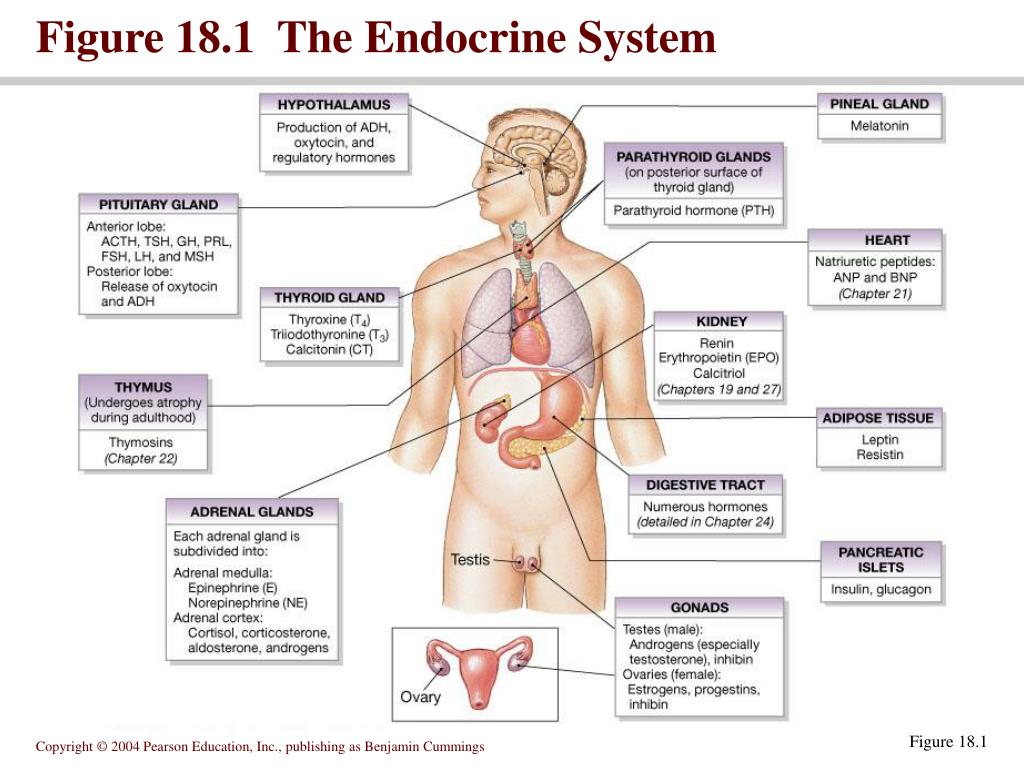 They include calcium, magnesium, phosphorus, sodium, potassium and chloride. Calcium is necessary for healthy bones and teeth, magnesium helps maintain a normal heart rhythm and reduces the risk of diabetes, phosphorus plays an important role in energy production, sodium and chloride help maintain a normal balance of water and electrolytes in the body, and potassium is involved in muscle function and normal blood pressure.
They include calcium, magnesium, phosphorus, sodium, potassium and chloride. Calcium is necessary for healthy bones and teeth, magnesium helps maintain a normal heart rhythm and reduces the risk of diabetes, phosphorus plays an important role in energy production, sodium and chloride help maintain a normal balance of water and electrolytes in the body, and potassium is involved in muscle function and normal blood pressure.
What percentage of your total body weight is skin?
The skin is the largest organ of the human body and accounts for approximately 15% of the total body weight. An adult weighing 70 kg has approximately 10.5 kg of skin. The skin performs many functions, including protecting organs and tissues from external influences, regulating body temperature, and participating in immune defenses.
Which organs belong to the endocrine system?
The endocrine system is a network of glands in the body that produce and release hormones into the blood. Hormones regulate many bodily functions, including metabolism, growth and development, reproduction, and stress responses. The endocrine system includes glands such as the thyroid, pituitary, pancreas, adrenals, gonads, and thymus.
Hormones regulate many bodily functions, including metabolism, growth and development, reproduction, and stress responses. The endocrine system includes glands such as the thyroid, pituitary, pancreas, adrenals, gonads, and thymus.
Bone marrow
Bone marrow is an important component of the human body and is the soft tissue found inside bones. An adult has about 2 kg of bone marrow.
Bone marrow performs many important functions: it produces blood and immune cells, supplies body tissues with essential nutrients, and removes waste products. Bone marrow disease can lead to a range of symptoms, including anemia, decreased immunity, and damage to the nervous system.
Bone marrow contains two types of cells: hematopoietic cells, which produce blood, and stomatogenic cells, which produce cells to form bones and cartilage. The bone marrow also contains other important cells, such as macrophages, which remove bacteria and damaged cells, and fibroblasts, which help repair body tissues after damage.
Bone marrow is an important element of the human body, responsible for many vital functions. Therefore, it is important to know how to maintain a healthy bone marrow in order to maintain your vitality and overall health.
Other organs and tissues.
In addition to the bones, muscles, and organs of digestion and respiration, there are other important organs and tissues in the human body.
For example, the skin is the largest organ of the human body. It has a protective function, protecting internal organs from the harmful effects of the environment, and also participates in the process of thermoregulation of the body.
Blood is the tissue that transports oxygen, nutrients and hormones throughout the body. Blood also protects the body from infections and helps repair damaged tissues.
The lymphatic system is also an important part of the body. It consists of lymphatic vessels, lymph nodes and lymphatic organs. The lymphatic system is involved in protecting the body from infections and cancer, and also regulates the balance of fluids in the body.
The nervous system is a network of nerves and cells that controls all body functions. It is responsible for the transmission of information between the brain and other parts of the body, and is also involved in the regulation of cardiac activity, respiration, digestion and other processes.
There are also various glands in the human body, such as the thyroid gland, which produce hormones that are responsible for many bodily functions such as metabolism, growth and development.
Finally, the immune system is an important part of the body that protects it from infection and disease. It includes various organs and tissues such as the bone marrow, thymus, lymph nodes, and spleen.
Endocrinologist / Services / Medical Center “Your Doctor”, Oktyabrsky.
05/25/2015
Services
0
The endocrine system is one of the most important systems in the body, which controls, coordinates and integrates the processes occurring in our body. The endocrine system is a complex group of endocrine glands that produce hormones. Hormones control the work of almost all organs and systems: reproductive function, the cardiovascular system, the emotional sphere, the work of the gastrointestinal tract, metabolic processes, the condition of the skin, the growth and development of the body, and much more.
The endocrine system is a complex group of endocrine glands that produce hormones. Hormones control the work of almost all organs and systems: reproductive function, the cardiovascular system, the emotional sphere, the work of the gastrointestinal tract, metabolic processes, the condition of the skin, the growth and development of the body, and much more.
Hormones are also responsible for the body’s interaction with the environment and help meet energy and nutrient needs. The organs that make up the endocrine system include the thyroid, parathyroids, pancreas, ovaries, testes, adrenals, pituitary, and hypothalamus.
If any component of hormonal regulation falls out of the general tuned system, then a single chain of regulation of the functions of the human body is disrupted and various pathological conditions develop. Any disturbances in the work of the endocrine system can have the most dangerous consequences, which can be avoided by the timely appointment of an endocrinologist.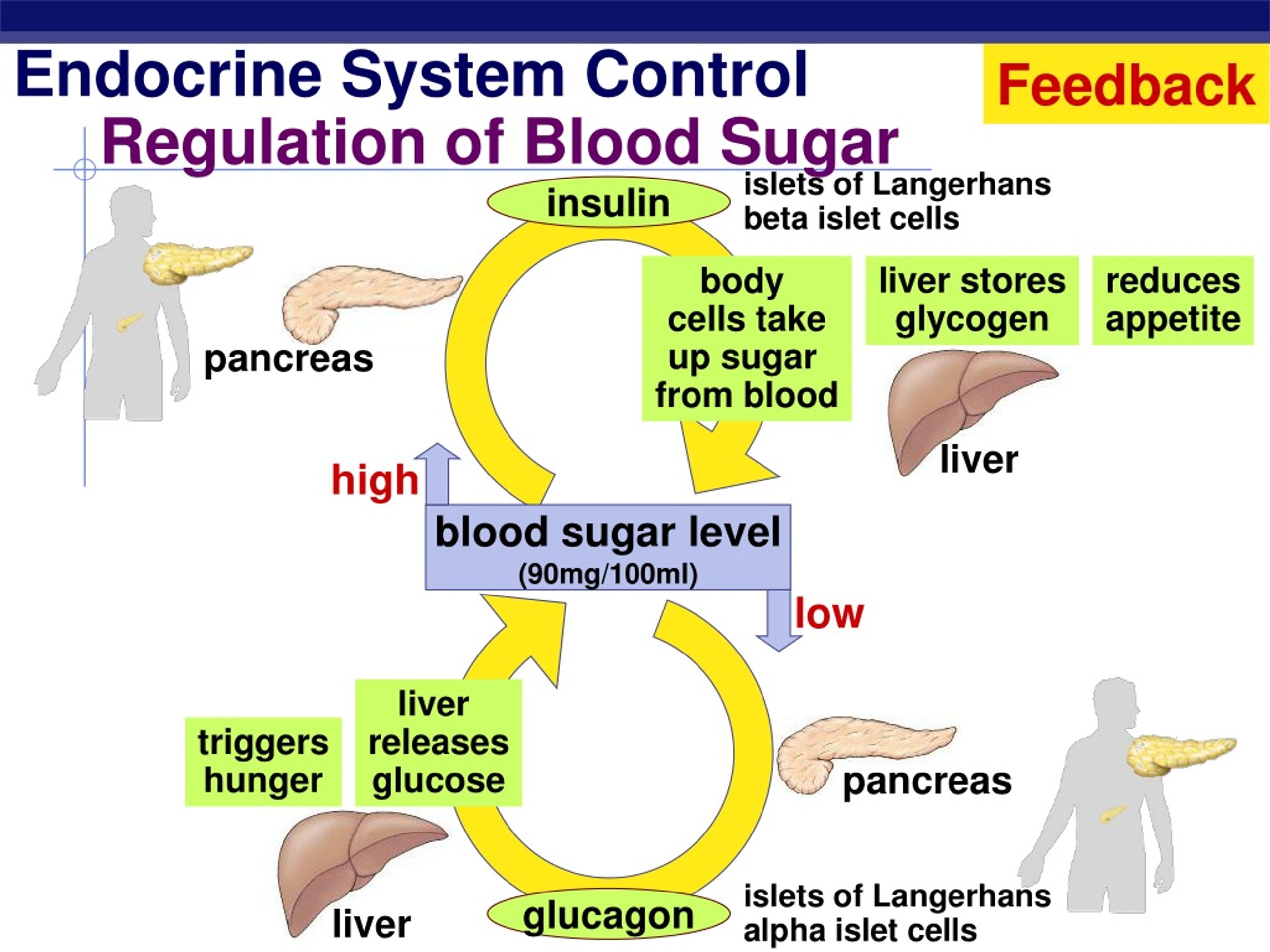
An endocrinologist is a physician who diagnoses, prevents and treats diseases of the endocrine system. The appointment of an endocrinologist is necessary in the treatment of diseases associated with a violation of the level of hormones, problems of weight gain or decrease, malfunctions of various body systems.
What are the symptoms that indicate malfunctions of the endocrine system and the need to visit an endocrinologist? In what cases is it impossible to do without the intervention of this specialist?
Manifestations of endocrine diseases are very diverse. You will need a consultation and appointment with an endocrinologist if you are worried about frequent mood changes, excessive fatigue, tearfulness and depression. These are states that indicate that a failure has occurred in the endocrine system.
Changes in appearance may also be a reason to visit a doctor: overweight or severe thinness, hair loss or, conversely, excessive hair, loss of teeth, soft nails, excessively dry skin.
Headaches, high blood sugar, hearing loss and memory loss are another reason to listen to your body and consult an endocrinologist. Dry mouth, constant thirst, burning eyes, cramps in the calf muscles should encourage a person to take care of their health.
Diagnosis of diseases of the endocrine glands is often a difficult task for a general practitioner, since the action of hormones affects all human organs and systems. Therefore, the endocrinologist is engaged in the diagnosis of hormonal disorders.
What are the most common endocrine diseases?
Diabetes mellitus
Patients with diabetes have an excess of sugar in the blood. In this disease, the production or action of the hormone insulin is impaired. Diabetes mellitus is one of the most common diseases in the world. Recent studies have shown that blood sugar control can prevent serious complications of diabetes such as nephropathy, retinopathy, polyneuropathy and avoid blindness, kidney failure, hemodialysis and limb amputations.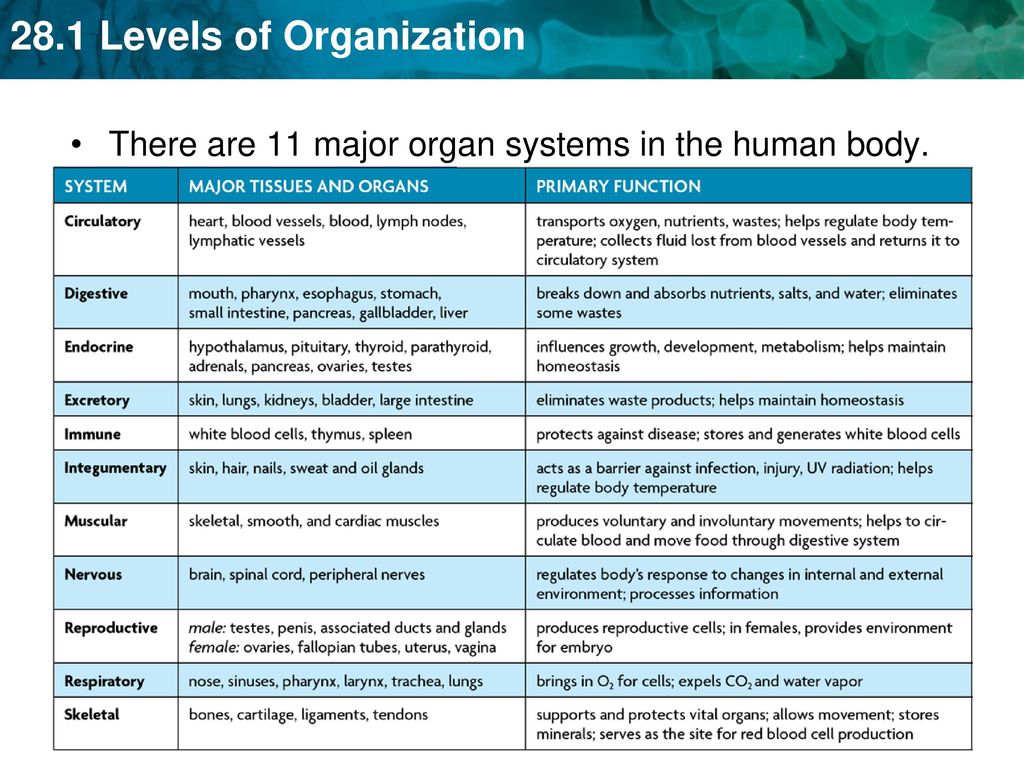 An endocrinologist treats diabetes with specific dietary guidelines and medications, including insulin. He also works closely with the patient to control blood sugar and prevent and treat complications.
An endocrinologist treats diabetes with specific dietary guidelines and medications, including insulin. He also works closely with the patient to control blood sugar and prevent and treat complications.
Thyroid disorders
Patients with thyroid disorders often have problems with their metabolic rate (metabolism). With such diseases, mood is disturbed, weight control is disturbed, the perception of cold and heat changes. An endocrinologist treats diseases associated with excessive (hyperthyroidism) or insufficient (hypothyroidism) production of thyroid hormones. An endocrinologist helps patients achieve hormonal balance by blocking or replacing thyroid hormone function. An endocrinologist also deals with enlarged thyroid problems (diffuse goiter), autoimmune thyroid diseases, and thyroid cancer.
Osteoporosis
Endocrinologist diagnoses conditions of bone softening (osteomalacia, rickets) and reduced bone density (osteoporosis). Osteoporosis is a disease that leads to a decrease in the strength of your skeleton, which can manifest as bone pain and fractures. Certain body hormones protect bone tissue from destruction. With the appearance of hormonal disorders of mineral metabolism, the bones begin to lose calcium and become brittle. Age-related changes – menopause in women and andropause in men – are risk factors for osteoporosis and fractures. The endocrinologist also treats other causes of osteoporosis, such as overactive parathyroid glands (hyperparathyroidism) or long-term use of corticosteroids (such as prednisolone).
Osteoporosis is a disease that leads to a decrease in the strength of your skeleton, which can manifest as bone pain and fractures. Certain body hormones protect bone tissue from destruction. With the appearance of hormonal disorders of mineral metabolism, the bones begin to lose calcium and become brittle. Age-related changes – menopause in women and andropause in men – are risk factors for osteoporosis and fractures. The endocrinologist also treats other causes of osteoporosis, such as overactive parathyroid glands (hyperparathyroidism) or long-term use of corticosteroids (such as prednisolone).
Overweight and obesity
Sometimes weight problems are the result of hormonal imbalances. Dysfunction of the thyroid gland, adrenal glands, pituitary gland and gonads can cause obesity. In addition to treating obesity, an endocrinologist identifies obesity-related risk factors such as insulin resistance and genetic disorders.
Pituitary gland
The pituitary gland is often called the main endocrine organ, since it controls the work of the other endocrine glands. The pituitary gland produces a large number of important hormones. Disruption of the pituitary gland can cause hormonal imbalance and lead to infertility, menstrual irregularities, growth disorders (acromegaly, gigantism, dwarfism), excessive production of glucocorticoids by the body (Cushing’s disease). The endocrinologist treats these conditions with medication and/or refers to a surgeon.
The pituitary gland produces a large number of important hormones. Disruption of the pituitary gland can cause hormonal imbalance and lead to infertility, menstrual irregularities, growth disorders (acromegaly, gigantism, dwarfism), excessive production of glucocorticoids by the body (Cushing’s disease). The endocrinologist treats these conditions with medication and/or refers to a surgeon.
Height
Both children and adults can have growth hormone (somatotropin) problems. With its insufficient production by the pituitary gland, dwarfism develops in childhood. With a lack of somatotropin in adults, fatigue, lethargy, depression, and disruption of the organs develop. Safe and effective growth hormone replacement therapy is available for these patients. Excess production of growth hormone by the pituitary gland in childhood leads to gigantism, in adulthood to acromegaly. Excessive production of somatotropin affects all organs and tissues, disrupts their work, increases the risk of cancer. Usually, endocrinologists treat acromegaly in conjunction with surgeons.
Usually, endocrinologists treat acromegaly in conjunction with surgeons.
Hypertension
Hypertension is high blood pressure and is a risk factor for cardiovascular disease. The reasons for the increase in pressure are different. About 10% of the increase in pressure is associated with excessive production of the hormone aldosterone by the adrenal glands. Half of these cases are associated with formations in the adrenal glands, which must be surgically removed. Overproduction of adrenaline by the adrenal glands (pheochromocytoma) also leads to a significant increase in blood pressure, even at a young age. All these diseases are successfully treated by endocrinologists.
Cholesterol disorders
Patients with lipid disorders have problems with normal levels of adipose tissue in the body. One of the most common problems is an increase in total cholesterol (hypercholesterolemia), low-density cholesterol (“bad” cholesterol, LDL), an increase in triglycerides (TG) in the blood.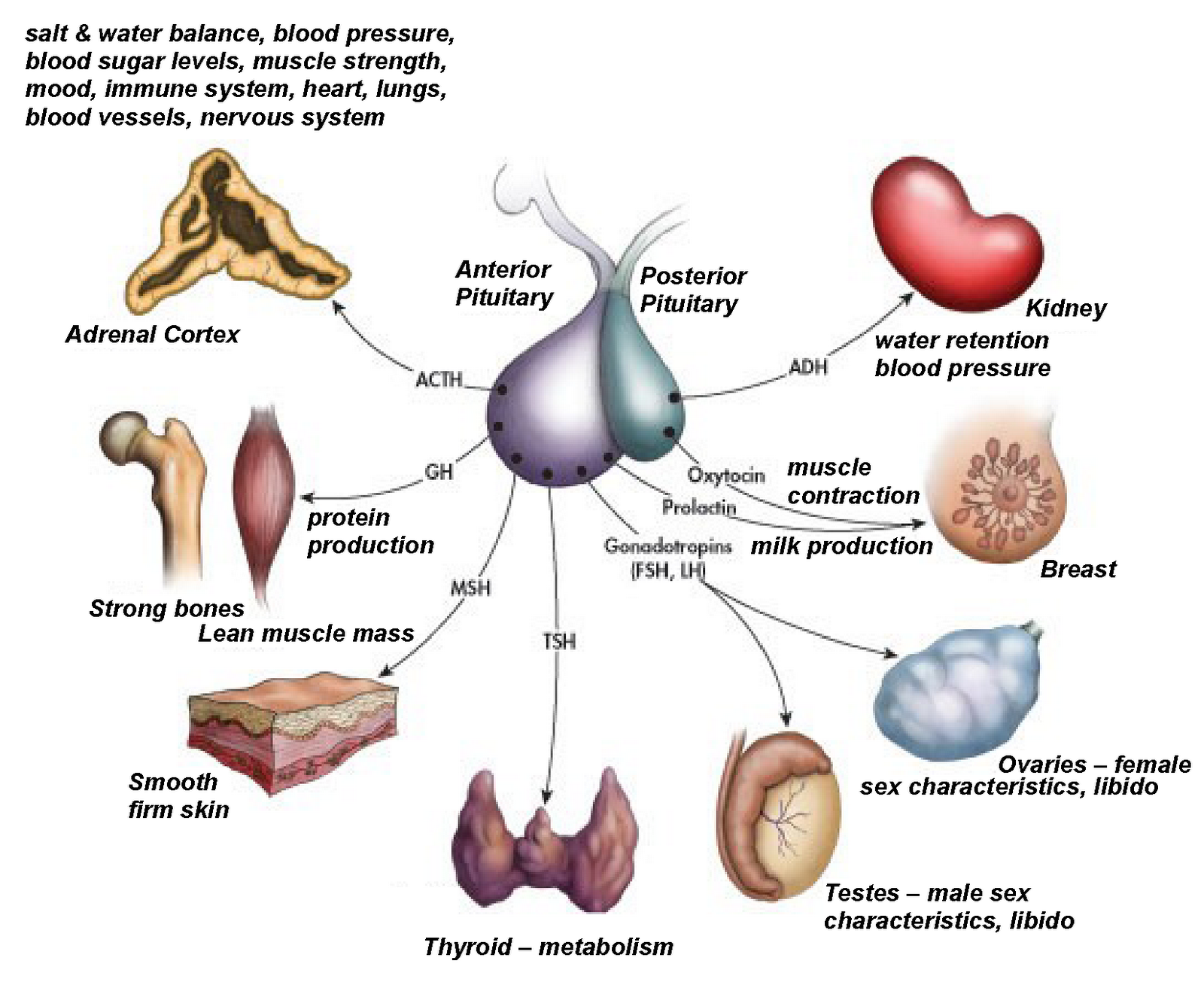 High levels of these fats in the blood can cause coronary heart disease, heart attacks and strokes, and circulatory disorders in the limbs.
High levels of these fats in the blood can cause coronary heart disease, heart attacks and strokes, and circulatory disorders in the limbs.
An endocrinologist identifies factors that can cause lipid disorders such as hypothyroidism, drug side effects (corticosteroids), genetic or metabolic causes (metabolic syndrome, polycystic ovary syndrome, obesity). Lipid metabolism disorders are successfully treated with special diets and drugs.
In case of hypothalamic-pituitary diseases:
in case of diabetes insipidus, symptoms are manifested in polyuria, polydipsia, sleep disturbance, and also in hyperprolactinemia syndrome, galactorrhea, frigidity, decreased libido, decreased appetite are observed.
If you have any signs of the above listed endocrine diseases, or found an increased or decreased level of hormones during the test, hurry up for a consultation with an endocrinologist. In addition, do not forget to undergo an annual thyroid ultrasound as a preventive measure, and in the presence of increased risks, donate blood to determine the level of thyroid hormones.



 They make male sex hormones like testosterone.
They make male sex hormones like testosterone. These tumours can be small (microadenomas) or large (macroadenomas).
These tumours can be small (microadenomas) or large (macroadenomas).

